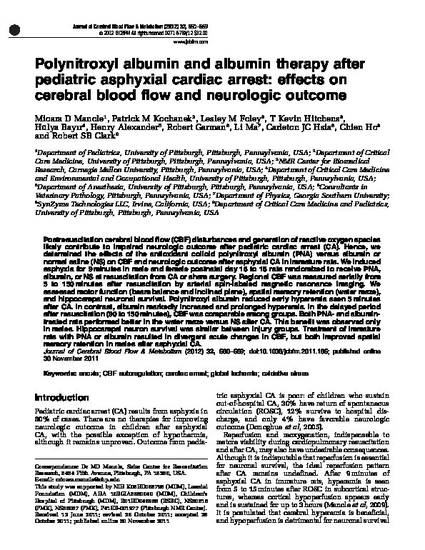
Postresuscitation cerebral blood flow (CBF) disturbances and generation of reactive oxygen species likely contribute to impaired neurologic outcome after pediatric cardiac arrest (CA). Hence, we determined the effects of the antioxidant colloid polynitroxyl albumin (PNA) versus albumin or normal saline (NS) on CBF and neurologic outcome after asphyxial CA in immature rats. We induced asphyxia for 9 minutes in male and female postnatal day 16 to 18 rats randomized to receive PNA, albumin, or NS at resuscitation from CA or sham surgery. Regional CBF was measured serially from 5 to 150 minutes after resuscitation by arterial spin-labeled magnetic resonance imaging. We assessed motor function (beam balance and inclined plane), spatial memory retention (water maze), and hippocampal neuronal survival. Polynitroxyl albumin reduced early hyperemia seen 5 minutes after CA. In contrast, albumin markedly increased and prolonged hyperemia. In the delayed period after resuscitation (90 to 150 minutes), CBF was comparable among groups. Both PNA- and albumin-treated rats performed better in the water maze versus NS after CA. This benefit was observed only in males. Hippocampal neuron survival was similar between injury groups. Treatment of immature rats with PNA or albumin resulted in divergent acute changes in CBF, but both improved spatial memory retention in males after asphyxial CA.
Available at: http://works.bepress.com/li_ma/31/

This accepted manuscript was obtained from PMC. The publisher's final edited version of this article is available at the Journal of Cerebral Blood Flow & Metabolism.